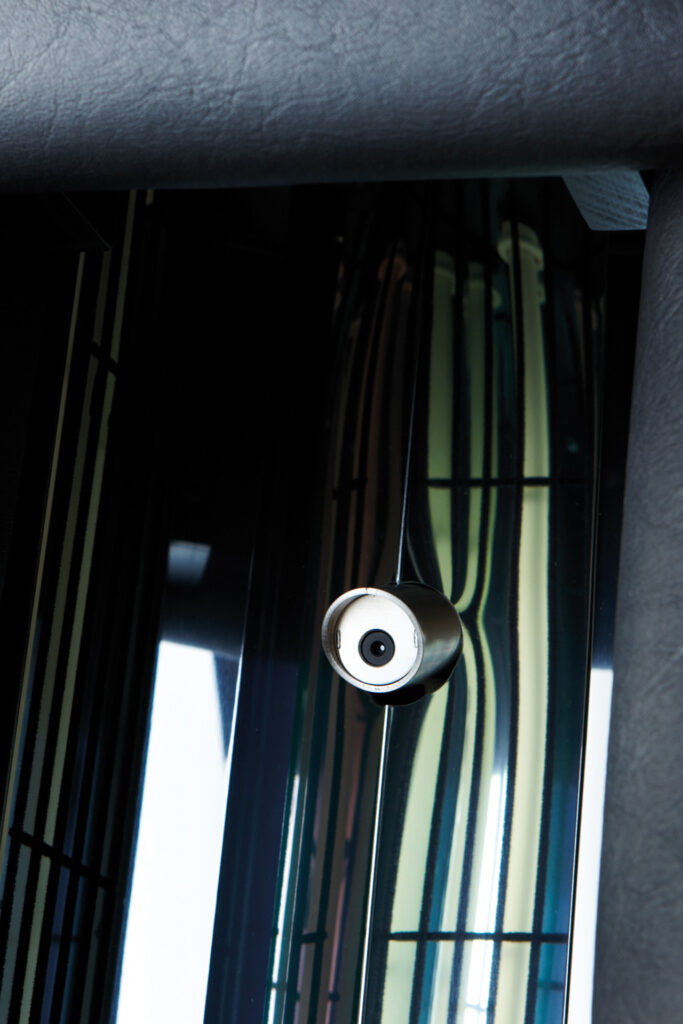Infrared
What is infrared
Translated from the Latin, the prefix "infra" means "below". The word "infrared" therefore makes it clear that it refers to a range of electromagnetic radiation that lies below the red end of the visible light spectrum. The infrared spectrum, which is invisible to us, covers the wavelength range from 780 nm to 1,000,000 nm (nanometers).
Because of its warming and soothing effect, infrared radiation is often referred to as "heat radiation".
How does Physiotherm infrared deep heat work?
The special lava sand ceramic tubes of the Physiotherm infrared cabins emit almost only infrared C, with a small proportion of approx. 3% infrared B.
First, the vessels in the skin expand in the irradiated back area. The heat is absorbed by the blood and lymphatic fluid and transported into the deeper layers of tissue.
The heat is then distributed from the spinal column area to the inside of the body via the circulation, so that the entire organism is gradually warmed through.
At a typical cabin temperature of approx. 35 °C, the body can easily release excess heat into the environment. The treatment therefore does not place any significant strain on the cardiovascular system.
This form of infrared deep heat promotes natural heat regulation and is perceived as very pleasant.
The body is therefore "warmed from the inside out".
Special features
Our own SENSOcare system


SENSOcare®
We are revolutionizing the market with the SENSOcare technology we have developed. It is the first infrared technology that automatically and contactlessly adjusts the infrared intensity to the needs of the body.
Everyone processes heat differently. Above all, the skin's ability to absorb heat is affected by many factors and the form of the day. This is why Physiotherm has developed SENSOcare®. Sensors measure the skin temperature of your back every second without contact during use. Algorithms based on findings from clinical studies use these measurements to automatically adjust the emitter temperature and therefore the infrared intensity and spectrum to the body's needs. The SENSOcare® safety technology thus permanently optimizes the heat supply and can protect your skin from burns. The infrared limit values (eyes and skin) are undercut.
Sensocare
Security technology

Sensocare
Heat detection


Strengthen the immune system
1 of 4Increase blood circulation
2 of 4Release tension
3 of 4positively influence skin diseases
4 of 4Health through infrared
When used regularly, infrared can:
...strengthen the immune system
...increase blood circulation and improve metabolism
...relieve tension and ease back pain
...have a positive effect on the treatment of skin diseases
A session in the Physiotherm infrared cabin has the same effect as light cardiovascular endurance training.
A thermoneutral environment (air temperature between 27 and 37°C) is required to achieve a well-tolerated warming of the body. In other words, an initial situation in which no heat is initially supplied to the body; the body is in thermal equilibrium with its surroundings and the blood can flow unhindered into the body. If a localized area of the skin (ideally the back) of no more than approx. 10 to 12 % of the skin surface is heated, thermoneutral blood (from approx. 90 % of the skin surface) mixes with heated blood (from 10 to 12 % of the skin surface). The heat alarm system inside the body does not activate, the influx of this amount of heat via the blood to the inside of the body is still permitted. The core body temperature then rises continuously and slowly from the beginning. The heat supplied is then gradually distributed from the inside to the outside via a change in blood circulation and blood distribution. The entire body (body core and body shell) is warmed through.
Medical studies and research on heat therapy and infrared applications
- Clinical effects of regular dry sauna baths: A systematic review
https://www.ncbi.nlm.nih.gov/pmc/articles/PMC5941775/#:~:text=Einrichtungen%20bieten%20oft%20Saunabäder%20an,%2C%20Stressmanagement%20%2C%20und%20Entspannung
- The effects of repeated heat therapy on the quality of life of patients with type II diabetes mellitus
https://pubmed.ncbi.nlm.nih.gov/20569036/
- Whole-body hyperthermia for the treatment of major depressive disorder: A randomized clinical trial
https://pubmed.ncbi.nlm.nih.gov/27172277/
- Effects of Waon therapy on chronic fatigue syndrome: a pilot study
https://pubmed.ncbi.nlm.nih.gov/25748743/
- Increased body temperature alleviates depression, according to a study
https://www.colorado.edu/asmagazine-archive/node/2080
- The effects of repeated heat therapy in patients with chronic pain
https://pubmed.ncbi.nlm.nih.gov/16088266/
- Effects of saunas in the far infrared cabin on recovery from strength and endurance training sessions in men
https://www.ncbi.nlm.nih.gov/pmc/articles/PMC4493260/
- Infrared sauna for patients with rheumatoid arthritis and ankylosing spondylitis.
https://pubmed.ncbi.nlm.nih.gov/18685882/
- Infrared therapy for chronic low back pain: a randomized controlled trial
https://www.ncbi.nlm.nih.gov/pmc/articles/PMC2539004/
- The blood pressure and heart rate during the sauna bath correspond to the cardiac responses during submaximal dynamic exercise
https://pubmed.ncbi.nlm.nih.gov/31126559/
- The use of far infrared in wound healing treatment
https://www.ncbi.nlm.nih.gov/pmc/articles/PMC5871200/#:~:text=Fern%2Infrarot%20(FIR)%20radiation,no%20consensus%20in%20clinical%20practice
- Removal of persistent toxins from the human body
https://pubmed.ncbi.nlm.nih.gov/20400489/
- Blood, urine and sweat test (BUS): monitoring and excretion of bioaccumulated toxic elements
https://pubmed.ncbi.nlm.nih.gov/21057782/
- Components of practical clinical detoxification programs - Sauna as a therapeutic tool
http://www.alternative-therapies.com/at/web_pdfs/ifm_proceedings_low.pdf#page=76
